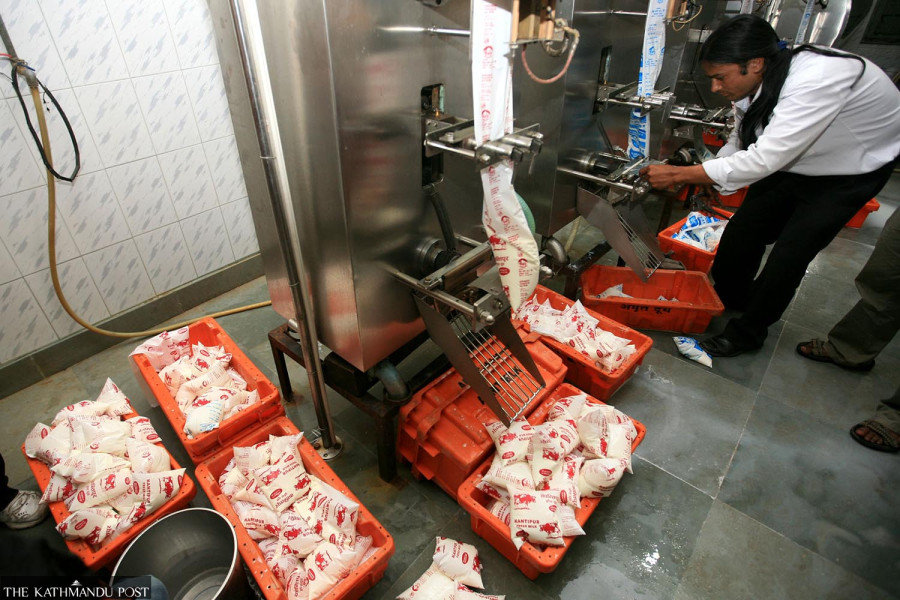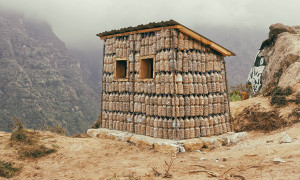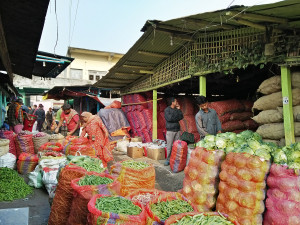Money
Nepal in a fix as India wants dairy ban lifted
Kathmandu has agreed to explore facilitation of imports of specific products like whey and cheese. Officials say this may court public backlash amid a milk surplus in Nepal.
Krishana Prasain
Two weeks ago, India raised concerns over the ban on its milk exports to Nepal. In response, Nepal agreed to explore the possibility of importing specific items like whey and cheese, which are not adequately produced in the country.
The concerns were raised during a meeting of the Nepal-India Inter-Governmental Committee (IGC) on Trade, Transit, and Cooperation to Combat Unauthorised Trade held in Kathmandu on January 10.
This has put Nepali authorities in a fix as milk is a political commodity.
The new facilitation initiative may see a backlash and trigger a public outcry.
But experts believe Nepal should have product-specific negotiations as a complete ban would contradict the spirit of the trade treaty.
At least three officials from the Industry and Agriculture ministries whom the Post talked to said no meetings to this effect have been held after the conclusion of the IGC meeting.
“We have till now not received any specific details from the industry ministry to hold a meeting on the issue,” said Mahanand Joshi, information officer at the Ministry of Agriculture and Livestock Development.
“We have not started any discussion, formally or informally, on the issue.”
An industry ministry official who wished not to be named said his ministry does not discuss this either.
According to Joshi, Nepal has recently imposed a blanket ban on imports of buttermilk, cheese, butter, pasteurised milk and other dairy products of Amul from India as they are produced in enough quantities in Nepal. “The move is aimed at protecting the domestic industry.”
Nepal is in the middle of a dairy recession.
Although production has been rising, consumption has declined, which insiders say is due to consumers’ shrinking incomes. A litre of milk now costs Rs110, up from Rs76 in 2019.
Domestic consumption has considerably declined, leading to an accumulation of butter and powdered milk stocks. As a result of reduced dairy product sales, the dairy sector, including the state-run Dairy Development Corporation, owes farmers millions of rupees.
The government has bailed out the corporation with a Rs600 million credit facility to settle farmers’ debt.
However, trade expert Purushottam Ojha, a former commerce secretary, said a ban is no solution.
The Nepal government took measures to sell unsold dairy products by issuing an import ban from India. “India has time and again imposed bans on different food items. And Nepal followed suit,” said Ojha. “That is against the spirit of the trade treaty between Nepal and India.”
The treaty mentions that if importing any goods and services threatens domestic industries, a ban can be enforced after an investigation, said Ojha. However, both countries have imposed a ban on their own, ignoring the provision in the trade treaty.
Nepal and India cannot impose tariffs on agricultural and primary products.
However, Nepal cannot export agricultural products that are on the prohibited list of India's Plant Quarantine Order.
At the recent IGC meeting, India agreed to permit Sal seeds and chayote imports at Nepal's request and accepted requests for other plant extracts.
According to a statement by the Indian Embassy in Nepal, New Delhi has accepted Nepal’s request to include Jatamasi root extract, Sugandhkokila berry extract, Sugandhwal Rhizome extract, and Timur berry extract in the processed items (plant products) list.
Nepal has occasionally imposed restrictions on dairy import from India following pressure from farmers.
According to the Dairy Sector Strategy-Nepal—a report of the Commercial Agriculture for Smallholders and Agribusiness programme supported by UK International Development—which ended in 2020, Nepal imported milk worth $18.7 million in 2017.
Almost 80 percent of Nepal’s dairy product imports originate in India.
The open border and proximity to markets favour trade between the two countries. However, due to the porous border, there are also many unofficial transactions. The report estimated that the scale of these unofficial transactions is almost half that of formal transactions.
Apart from India, there were significant imports of dairy products from other countries, including from New Zealand, Bangladesh and Belgium.
The imports from India, which are mainly in the form of powdered milk, were estimated at 4,481 tonnes per annum, equivalent to 19 million litres of whole milk. They are important, as domestic production has been unable to meet Nepal’s demand.
Processors depend on imports from India to satisfy demand and boost their capacity utilisation.
The report said that the buying price of milk in Nepal is higher than that in India, which encourages the informal movement of raw milk along the extensive border.
Chitwan’s large milk powder plant was damaged during the 2015 earthquake and forced to cease production. This plant, with a drying capacity of 150,000 litres of milk per day, had played a pivotal role in processing part of the annual flush of milk—the skimmed milk powder (SMP) produced was distributed to smaller dairies, reconstituted and sold as liquid milk.
In the first lean production period following the plant’s closure, the country started to experience milk shortages, and imports of SMP from India increased. In August 2018, the refurbished plant was opened, but imports were still allowed.
In April 2019, according to the report, there were disturbances as farmers objected that they could not sell their milk. The government quickly placed a total ban on the import of SMP from India.
In August 2019, Nepal faced another milk shortage, prompting significant pressure to lift the ban on SMP to guarantee milk availability for upcoming festivals.
The report said small volumes of milk and milk products were exported from Nepal, although the exports were not sustained. The major export commodities were butter and ghee to India.
Some butter was also exported to other countries, including the United States, by Dairy Development Corporation (DDC). The only exports from a private dairy enterprise were by Chitwan Milk to Pakistan: In 2010, the company exported SMP for the first time to Pakistan, but this was a one-off event.
The traditional Nepali milk derivative ‘chhurpi’ is exported from the eastern part of Nepal to the US, where it is in demand as a dog chew.
Due to the 2018 ban on SMP imports, dairy and other associated industries have struggled to meet consumer demand, especially during the lean season.
In April last year, the Nepali dairy industry surprisingly requested the government to lift restrictions on importing skimmed or whole cream milk powder to prevent milk shortages in the domestic market.
Dairies cited reasons such as the Covid pandemic and the prevalence of lumpy skin disease in cattle behind the drop in domestic milk production.
But after a few months, the flush season started, and milk production was in surplus.
The lean season is March-July, and the flush season is August-February.
Recently, the state utility DDC inked a pact to supply raw cheese to a private company, a move to generate cash as Nepal’s largest dairy company teeters on the edge of bankruptcy.
DDC is also set to sell its butter in China.
Dairy employs 130,000 people and contributes 9 percent to Nepal’s GDP.




 9.12°C Kathmandu
9.12°C Kathmandu














